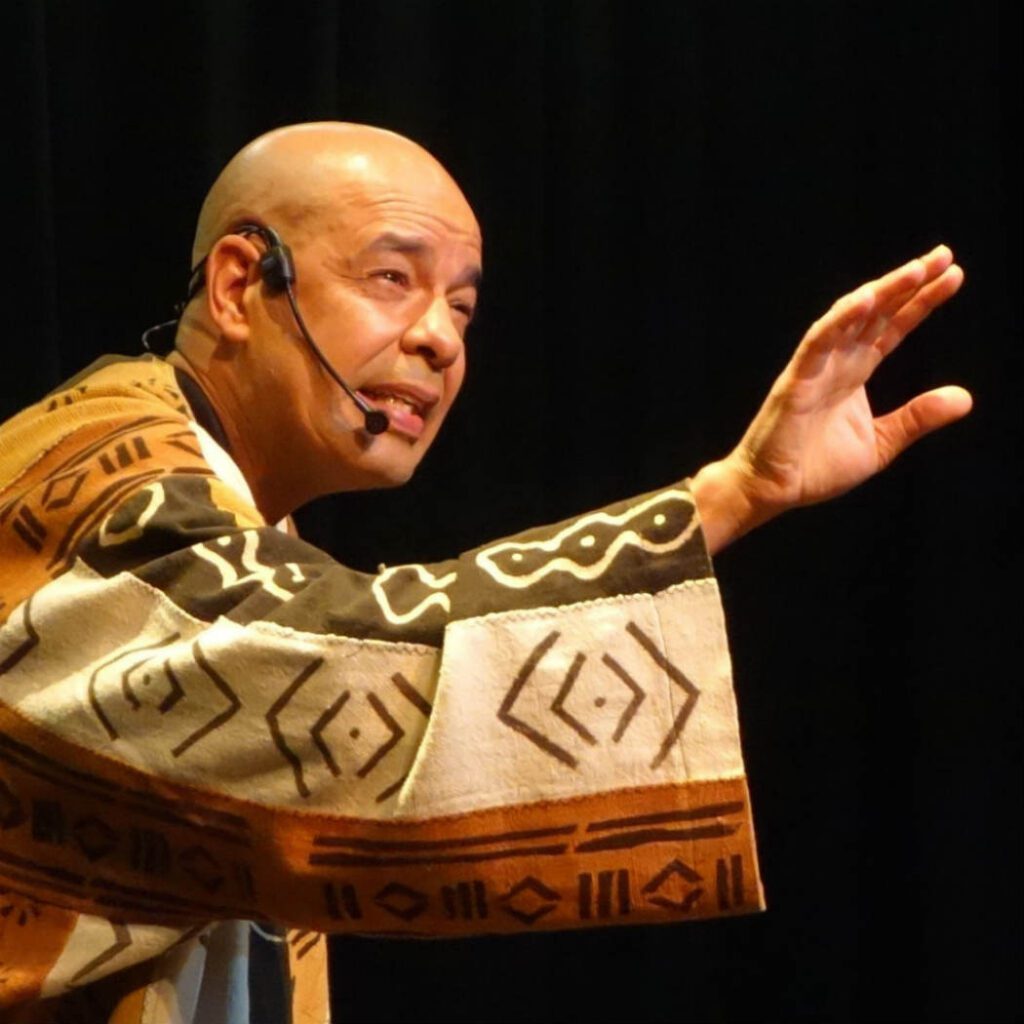
Yesterday evening, the Middle Passage Ceremonies and Port Markers Project (MPCPMP) hosted Antonio Rocha’s performance of “Voyage through Death to Life upon these Shores”: The Malaga Speaks. Here’s the description of the program, which will soon be on YouTube:
The story of the Malaga, a 19th century ship built in Maine that transported captive Africans, was created and will be performed by Antonio Rocha. Told from the perspective of the ship, Rocha uses song, narration, and mime to weave his way through this historical tale that chronicles the history of the trans-Atlantic human trade and its legacy. Annually, on August 23rd, the Middle Passage Ceremonies and Port Markers Project (MPCPMP) hosts a program to acknowledge this day and the lives of those captive Africans who perished during the trans-Atlantic crossing known as the Middle Passage and the ten million who survived to build the Americas. Through the presentation of this creative work, The Malaga Speaks, MPCPMP offers a broader narrative of connection and the Diaspora – from ship building, to the ocean voyage, to arrival, into enslavement; from Maine, to Africa, across the Atlantic, to Brazil.
Rocha’s performance is a powerful one. He builds and weaves a narrative that reveal layers of history and experiences of the Middle Passage as a knowledge that is both painful and liberatory the deeper he enters into the story of the Malaga. There is a body memory, a visceral space where those who survive decide what they can carry, and what was left by the ancestors for us today.
For more information about Antonio Rocha visit www.storyinmotion.com
Check out the MPCPMP’s Resources page: https://www.middlepassageproject.org/resources/
Discover more from Latino Genealogy & Beyond
Subscribe to get the latest posts sent to your email.

Enjoying your website. Richard Benejan shared it with me.
My wife is from Moca. Her father is Vicente Romero y Jimenez, and, mother Rosa Lydia Marcial y Conti, both buried in Moca. My wife’s DNA shows 25% Portugeuse/32% Spanish and Basque/25% Taino and bits of African, Jewish, and Northern European.
I’ve been trying to find the Taino Link. I’d be thankful for any recommendations.
JD-Currently, near San Antonio, Texas.
thanks so much JD! Your wife can do an mtDNA test on FamilyTree DNA to see what haplogroup she has for her direct female ancestor (her mother’s mother’s mother’s…etc) which has a 600 year window. With the autosomal DNA test (Ancestry, 23&Me, etc) then see who matches her mother, maternal grandmother and back. Identifying people as ‘Indio’ in Puerto Rico ended with an 1808 decree that relegated AfroIndigenous people to colors- pardo, mulato, negro and their status, libre o esclavo was used instead. This = paper genocide. Arawakan peoples became an identity hidden in plain sight. Oral history can provide more clues and recognition than documents for this, while DNA provides proof that Taino ancestry is there.
Unlike other Caribbean islands, Boriken has high percentages of Indigenous DNA and a long history of colonization, slavery and assimilation. That said, culture and DNA are not identical, and understanding of how this unfolded with first the Indigenous then African Transnational Slave Trade, then blended with different migrations over time resulted in different island populations. As situations are complex, knowing more about this earlier history is helpful. Please thank Richard for suggesting my website!